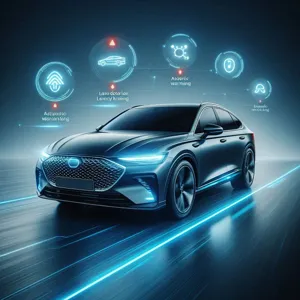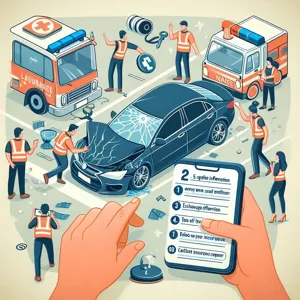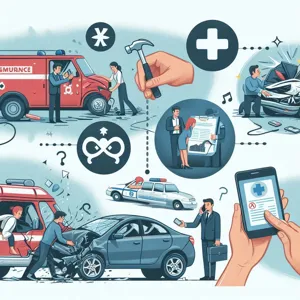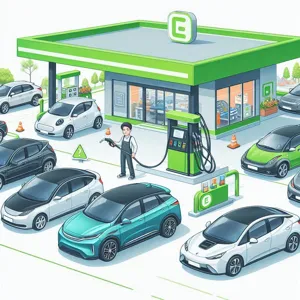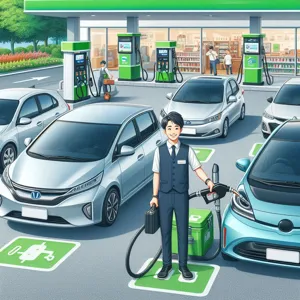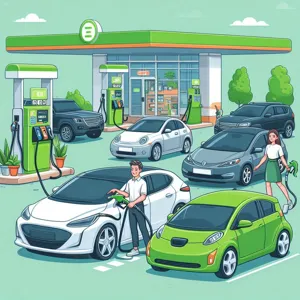A car breakdown can be one of life’s most stressful experiences, striking when you least expect it and leaving you feeling vulnerable and anxious.
Whether you’re on a quiet country road, stuck in heavy traffic, or miles away from home, knowing how to respond can make all the difference between a minor inconvenience and a major headache. In this ultimate guide, we’ll equip you with essential tips and strategies to help you stay calm and safe during a car breakdown. From understanding the common causes of breakdowns to mastering the art of roadside assistance, you’ll learn how to effectively navigate this challenging situation with confidence. So buckle up and prepare to turn a potentially stressful scenario into a manageable experience, ensuring that you and your vehicle are well-prepared for whatever the road throws your way!
1. Understanding the Types of Car Breakdowns

When it comes to car breakdowns, knowledge is your first line of defense. Understanding the various types of breakdowns can help you prepare, respond appropriately, and potentially avoid panic when your vehicle encounters trouble on the road.
**Mechanical Failures:** These are perhaps the most common and can range from engine troubles to issues with the transmission, brakes, or electrical systems. A mechanical failure might manifest as strange noises, warning lights on the dashboard, or a sudden loss of power. It’s crucial to pay attention to your car’s signals—ignoring them can lead to more severe problems.
**Flat Tires:** A flat tire can happen to anyone at any time, often without warning. Whether caused by a sharp object on the road, wear and tear, or a slow leak, flat tires can leave you stranded if you’re unprepared. Having a spare tire and the tools to change it can make all the difference.
**Fuel Issues:** Running out of gas is more common than you might think, especially if you’re not monitoring your fuel gauge closely or if there’s a sudden detour on your route. Being caught in this situation can be frustrating, but it serves as a reminder to always keep your tank above a quarter full whenever possible.
**Electrical Problems:** Issues with your car’s electrical system can lead to sudden breakdowns. From dead batteries to faulty alternators, electrical problems often arise unexpectedly. Familiarize yourself with the signs of battery failure, such as dimming headlights or difficulty starting your engine.
**Overheating:** An overheating engine can bring your journey to a grinding halt and can be caused by several factors, including low coolant levels, a malfunctioning thermostat, or a broken water pump. Recognizing the signs of overheating—such as a warning light or steam rising from the hood—can help you take proactive measures before the situation escalates.
By understanding these types of breakdowns, you’ll not only be better prepared to handle them but also equip yourself with the knowledge to maintain your vehicle and minimize the risk of being stranded. Remember, awareness is key in ensuring your safety and calm during a vehicular emergency.
2. Preparing Your Vehicle for the Unexpected
Preparing your vehicle for the unexpected is the first line of defense against the stress and danger of a car breakdown. A well-maintained vehicle can significantly reduce the likelihood of mechanical failures and unexpected issues on the road. Start by scheduling regular maintenance checks with a trusted mechanic who can inspect essential components such as the engine, brakes, tires, and battery.
Consider creating a maintenance checklist to stay on top of routine tasks—things like checking tire pressure, changing the oil, and replacing worn-out wiper blades. Don’t underestimate the importance of your tires; ensure they have sufficient tread and are inflated to the recommended pressure. A sudden flat can leave you stranded in an inconvenient location, increasing the risk of danger.
Additionally, keep an eye on your vehicle’s fluid levels—engine oil, coolant, brake fluid, and windshield washer fluid. Low fluid levels can lead to overheating or reduced braking efficiency, making your car more susceptible to breakdowns.
Lastly, equip your vehicle with an emergency kit that includes items like a flashlight, first aid supplies, jumper cables, road flares, and a spare tire. Having these essentials can provide peace of mind, ensuring you’re prepared to handle minor incidents without panic. By investing time and effort into preparing your vehicle, you turn the unexpected into manageable situations, allowing you to remain calm and safe on the road.
3. Essential Emergency Tools to Keep in Your Car

When it comes to ensuring your safety and calm during an unexpected car breakdown, having the right emergency tools at your disposal can make all the difference. These essential items not only equip you to handle minor issues but also provide peace of mind knowing you’re prepared for the unexpected. Here’s a detailed look at the must-have tools you should keep in your vehicle:
1. **Roadside Emergency Kit**: Every car should be equipped with a comprehensive roadside emergency kit. This should include basic tools like wrenches, screwdrivers, and pliers, as well as jumper cables for dead batteries. Additionally, consider including a tire inflator and sealant, which can be a lifesaver if you experience a flat tire.
2. **First Aid Kit**: Accidents can happen at any time, so having a first aid kit is crucial. Pack it with bandages, antiseptic wipes, pain relievers, and any personal medications you may need. A well-stocked first aid kit can help you address minor injuries and stabilize more serious ones until help arrives.
3. **Reflective Triangles and Flares**: Visibility is key during a breakdown, especially at night or in low-light conditions. Reflective triangles or road flares should be part of your emergency arsenal. They alert other drivers to your presence and help prevent further accidents, ensuring you stay safe while waiting for assistance.
4. **Flashlight and Extra Batteries**: A reliable flashlight is essential for nighttime breakdowns or when checking under the hood. Opt for a durable, waterproof flashlight, and don’t forget to pack extra batteries or consider a rechargeable option.
5. **Multi-tool or Swiss Army Knife**: This handy tool can serve multiple purposes, from cutting through seatbelts to making minor repairs. A good multi-tool combines several functions into one compact device, which can be invaluable during emergencies.
6. **Blanket and Warm Clothing**: If you’re stranded in colder weather, a thermal blanket and extra clothing can keep you warm until help arrives. Hypothermia is a serious risk in the winter months, so include these items in your emergency kit for added safety.
7. **Portable Phone Charger**: In today’s tech-driven world, a dead phone can be a serious liability. Keep a portable charger in your car to ensure your phone remains charged, allowing you to call for help or access navigation tools when you need them most.
By assembling these essential emergency tools, you empower yourself to handle a variety of situations that may arise during a car breakdown. Not only will you be prepared, but you’ll also feel more confident and calm knowing that you have the necessary resources to navigate the unexpected. Remember, a little preparedness goes a long way in ensuring your safety on the road!
4. Steps to Take Immediately After a Breakdown
Experiencing a car breakdown can be a jarring event, but knowing the right steps to take immediately afterward can make a significant difference in ensuring your safety and minimizing stress. The moment you realize your vehicle has stalled, the first priority is to remain calm. Take a deep breath, and follow these essential steps to navigate the situation effectively.
**1. Get to Safety:** If your car is still rolling, steer it to the side of the road as safely as possible. Aim for a flat, stable area away from traffic. Once stopped, turn on your hazard lights to alert other drivers that you are in distress. If you can, exit the vehicle from the passenger side to avoid oncoming traffic.
**2. Assess the Situation:** Take a moment to evaluate what went wrong. If it’s safe to do so, pop the hood to signal that you’re experiencing car trouble. Look for warning lights on the dashboard or any visible signs of damage, such as smoke or leaks. However, be cautious—if anything looks dangerous, prioritize your safety by keeping a safe distance.
**3. Call for Help:** If you have roadside assistance coverage, now is the time to use it. Call the service provider and provide them with your exact location and a description of the problem. If you don’t have roadside assistance, consider contacting a friend or family member for support or look up a nearby mechanic or towing service.
**4. Stay Visible and Patient:** While waiting for help, it’s crucial to remain visible. If you’re on a busy road, consider setting up emergency flares or reflective triangles to alert other drivers. Stay inside your vehicle if you’re on a busy highway, as this is often the safest option. Use this time to gather your thoughts, check your phone for updates, or review your roadside assistance options.
**5. Prepare for the Next Steps:** Once help arrives, be ready to explain your situation clearly. If a mechanic is on the way, have your vehicle’s details handy, including the make, model, and any relevant service history. This preparation will facilitate a smoother resolution and get you back on the road more quickly.
By following these steps immediately after a breakdown, you can ensure not only your safety but also a more efficient recovery process. Remember, staying calm and collected is key—help is on the way.
5. How to Safely Exit Your Vehicle

When faced with a car breakdown, knowing how to safely exit your vehicle can make all the difference in ensuring your safety. The first step is to assess your surroundings: if you’re on a busy highway or a narrow road, your safety should be your primary concern. If possible, gently steer your vehicle to the shoulder or a safe area away from the flow of traffic before you exit.
Once you’ve found a secure location, put your hazard lights on to alert other drivers of your situation. This is a vital step that helps to prevent any potential accidents. Before you open your door, take a moment to look in your mirrors and check for any approaching vehicles. Open the door slowly, being mindful of traffic, and exit the vehicle with caution.
As you step outside, it’s important to keep your distance from the roadside. Ideally, you should stand behind a guardrail or a safe distance away from the edge of the road. If you have passengers, ensure they exit the vehicle in the same manner, prioritizing their safety as well.
Once outside, make your way to a safe spot, such as a nearby parking lot or a designated waiting area, and avoid standing directly next to your car. If you need to call for help, do so from a safe distance, using your phone or a roadside assistance app. Remember, staying calm and composed during this stressful situation is crucial not only for your safety but also for the safety of others on the road. Following these steps will help you handle a car breakdown with confidence and care.
6. Setting Up Roadside Flares and Safety Cones
When faced with a car breakdown, ensuring your safety and the safety of others is paramount. One of the most effective ways to alert other drivers to your situation is by setting up roadside flares and safety cones. This quick action not only provides a visual warning but also helps to create a secure perimeter around your vehicle.
Start by positioning your vehicle as safely off the road as possible, ideally on a flat area where you won’t risk rolling back into traffic. Once you’ve done that, retrieve your roadside flares or safety cones from your emergency kit. If you’re using flares, light them one at a time and place them at a safe distance behind your vehicle—typically about 30 feet, depending on visibility conditions. The bright, flickering light of the flares will catch the attention of oncoming vehicles, making it clear that there’s a problem ahead.
If you have safety cones, deploy them in a similar manner. Set them up at least 10-15 feet behind your vehicle, angling them slightly toward the road. This creates a visual cue that extends the warning zone and helps drivers understand that they should slow down and navigate around you with caution.
For added visibility during twilight or nighttime conditions, consider using reflective triangles in conjunction with your flares or cones. These triangles can be seen from a distance and will further enhance your safety. Remember, the goal is to create a clear and visible warning to other drivers while also providing yourself with a safe space to wait for assistance. By taking these steps, you not only protect yourself but also contribute to the overall safety of the roadways, making a stressful situation a little more manageable.
7. When to Call for Roadside Assistance

Knowing when to call for roadside assistance can be the difference between a minor inconvenience and a major headache during a car breakdown. While some situations may allow for a quick fix, others may leave you stranded and in need of professional help. Here are some key scenarios when you should reach for your phone and request assistance.
First and foremost, if you find yourself with a flat tire and lack the necessary tools or experience to change it safely, don’t hesitate to call for help. Attempting to change a tire on a busy road can be dangerous, and roadside assistance professionals have the equipment and expertise to handle the situation quickly and safely.
Similarly, if your vehicle overheats, it’s crucial to know when to step back. While you may be able to identify that the engine is too hot, addressing the problem without the right knowledge can lead to further damage. In these cases, it’s best to wait for a professional who can assess the issue and get you back on the road.
Another common scenario is running out of fuel. If you find yourself stuck on the side of the road with an empty tank, calling for roadside assistance is a practical solution. Many services can deliver fuel directly to your location, saving you the hassle of finding a gas station on foot.
Additionally, if your car won’t start due to a dead battery or electrical issue, it’s wise to call for help rather than attempting to jump-start the vehicle yourself, especially if you’re unsure about the process. Professionals can diagnose the problem and ensure that any underlying issues are addressed.
Lastly, if you’re in an unfamiliar area and feel unsafe, don’t hesitate to reach out for roadside assistance. Whether it’s a remote location or a high-crime area, your safety is the top priority. A roadside assistance service can provide not only mechanical help but also guide you to a safer location.
In summary, knowing when to call for roadside assistance can help you handle a breakdown with confidence. Keep these scenarios in mind, and don’t hesitate to lean on professionals when you need them. It’s better to err on the side of caution and ensure your safety and the safety of others on the road.
8. Communicating with Emergency Services
When faced with a car breakdown, communicating effectively with emergency services can make a significant difference in the outcome of the situation. It’s essential to remain calm and focused, as clear communication can expedite assistance and ensure your safety.
Start by providing your location in as much detail as possible. If you’re on a highway, mention the mile marker or exit number, as well as the direction you were traveling. In urban areas, reference nearby landmarks, intersections, or street names to help responders find you quickly. For added convenience, many smartphones have GPS capability that can automatically send your location to emergency services, so don’t hesitate to use this feature if available.
Next, describe the nature of your breakdown. Are you experiencing engine trouble, a flat tire, or something more serious? Providing specific details will help the dispatcher understand your situation better, allowing them to send the appropriate type of assistance. If there are any potential hazards, such as being stranded on a busy road or in inclement weather, be sure to communicate this as well.
Remain on the line until the dispatcher confirms they have all the necessary information. They may have additional questions or instructions, and staying connected ensures you’re informed about what to expect. If you have a roadside assistance plan, mention that to the operator, as they can coordinate with your service provider for a faster response.
Finally, once you hang up, keep your phone handy and remain alert for the arrival of emergency services. While waiting, stay inside your vehicle if it’s safe to do so, as this provides protection from other traffic. Turn on your hazard lights to increase visibility and use reflective triangles if you have them to alert other drivers of your presence. By communicating effectively with emergency services, you can navigate a stressful situation with greater ease and ensure that help arrives as quickly as possible.
9. Managing Stress and Anxiety During a Breakdown
Experiencing a car breakdown can be a highly stressful and anxiety-inducing situation. The unexpected halt of your vehicle often brings a rush of negative emotions—fear of being stranded, concerns about safety, and worries about the cost of repairs. However, managing stress and anxiety during such moments is crucial for both your mental well-being and your ability to respond effectively.
First and foremost, take a deep breath. Grounding yourself through controlled breathing can help reduce immediate feelings of panic. Inhale deeply through your nose for a count of four, hold for a moment, and then exhale slowly through your mouth. Repeat this a few times until you feel a sense of calm wash over you.
Next, remind yourself of the steps you can take to resolve the situation. Being proactive can significantly alleviate feelings of helplessness. Ensure you have your emergency kit within reach, complete with essentials like a flashlight, water, snacks, and a first aid kit. Familiarize yourself with your roadside assistance options, whether it’s a service provided by your insurance or a separate membership. Knowing help is just a phone call away can provide immense reassurance.
While waiting for assistance, try to keep your mind occupied. Listen to an engaging podcast, read a book on your phone, or even practice mindfulness techniques to center your thoughts. These distractions can diminish the focus on your stress and help the time pass more quickly.
It’s also important to acknowledge your feelings. It’s entirely natural to feel anxious in this situation. Don’t hesitate to reach out to a friend or family member for support. A quick chat can provide comfort and remind you that you’re not alone.
Finally, once the situation is resolved, reflect on the experience. Consider what you’ve learned and how you can prepare for the future. This can transform a stressful event into an opportunity for growth, equipping you with the knowledge and tools to handle similar situations with greater ease and confidence next time.
By managing your stress and anxiety effectively, you can not only navigate the challenges of a car breakdown but also emerge from the experience feeling empowered and more resilient.
10. Tips for Waiting Safely for Help to Arrive
Waiting for help during a car breakdown can be a tense experience, but keeping your composure and prioritizing safety is essential. Here are some practical tips to ensure you remain calm and secure while you wait for assistance.
**1. Move Your Vehicle:** If it’s safe to do so, try to move your car to the side of the road or onto a shoulder. This not only reduces the risk of accidents but also makes it easier for emergency responders to reach you. If your vehicle is immobile, turn on your hazard lights to alert other drivers of your presence.
**2. Stay Inside Your Vehicle:** Unless you’re in a particularly unsafe location, it’s generally best to stay inside your car with your seatbelt fastened. This provides you with a protective barrier from passing traffic and keeps you safe from any potential threats.
**3. Lock Your Doors:** Keeping your doors locked while you wait is crucial for your safety. It acts as a deterrent against unwanted intruders and provides peace of mind as you wait for help.
**4. Keep Your Phone Charged:** Always ensure your phone is charged before embarking on a journey. If you find yourself stranded, you can easily contact roadside assistance or loved ones. If your battery is low, conserve power by limiting unnecessary app use, and consider using a power bank if you have one on hand.
**5. Stay Visible:** If you have warning triangles or flares, use them to make your vehicle more visible to oncoming traffic. This is especially important during low-light conditions or inclement weather.
**6. Remain Patient and Calm:** It’s natural to feel anxious, but try to remain calm. Use this waiting time to take deep breaths, listen to music, or read a book. Keeping your mind occupied can help reduce stress and make the wait more bearable.
**7. Prepare for the Unexpected:** Always have an emergency kit in your vehicle that includes water, snacks, a flashlight, and a first-aid kit. These supplies can be invaluable in case you end up waiting longer than expected.
By following these tips, you can ensure that you remain safe and composed while waiting for help to arrive after a car breakdown. Remember, staying calm is key to handling the situation effectively.
11. What to Do if Your Car Breaks Down in an Unsafe Area
Experiencing a car breakdown is stressful enough, but when it occurs in an unsafe area, the anxiety can escalate dramatically. Whether you’re roadside in a dimly lit part of town, on a deserted highway, or in a location that feels isolated, it’s crucial to prioritize your safety first. Here’s what to do if you find yourself in such a precarious situation.
**Stay Inside Your Vehicle**
If you break down in an area that feels unsafe, your first instinct might be to exit the vehicle. However, it’s generally safer to stay inside your car, especially if traffic is heavy or there is a risk of encountering suspicious individuals. Lock your doors and keep your windows rolled up to create a barrier between you and potential threats.
**Assess Your Surroundings**
While remaining in your vehicle, take a moment to assess your surroundings. Look for safe havens nearby, such as gas stations, populated areas, or well-lit places where you can seek assistance. If you can do so safely, turn on your hazard lights to make your vehicle more visible to other drivers.
**Contact Roadside Assistance**
Once you feel it is safe to do so, reach for your phone and contact your roadside assistance service. If you aren’t a member of a service, consider calling a friend or family member who can help you arrange for a tow or provide support. When speaking to the operator, give them your exact location and any landmarks that can help them find you quickly.
**Use Your Emergency Kit**
If you have a roadside emergency kit in your car, it’s wise to utilize it. Set up warning triangles or flares at a safe distance behind your vehicle to alert other drivers of your situation. This can help prevent further accidents and provide visibility to potential good Samaritans who might stop to assist.
**Stay Calm and Alert**
While waiting for help to arrive, try to stay calm and collected. Keep your phone charged and stay alert to your surroundings. If anyone approaches your vehicle and you feel uncomfortable, do not hesitate to drive away if it is safe to do so. Trust your instincts; if something doesn’t feel right, it’s always better to err on the side of caution.
**Plan Your Escape**
If the situation begins to feel more threatening, and it becomes necessary to leave your car, plan your exit carefully. Choose a direction that leads you to safety, such as toward a well-lit area or a nearby business. Always be aware of your surroundings as you make your way, and if possible, flag down a passing vehicle for assistance.
Remember, staying calm and focused during a breakdown in an unsafe area can make all the difference. Prepare yourself with these strategies, and you’ll be equipped to handle the unexpected with confidence.
12. Keeping Yourself and Passengers Safe
When faced with a car breakdown, the safety of yourself and your passengers should be your top priority. The moment you realize something is wrong with your vehicle, take a deep breath and assess the situation calmly. If possible, steer your car towards the side of the road, away from traffic. Use your turn signal to indicate your intention to pull over, allowing other drivers to anticipate your movements.
Once you’ve come to a stop, ensure that everyone in the car is wearing their seatbelt until the vehicle is fully stationary and it’s safe to exit. If you’re on a busy highway or a road with high-speed traffic, it’s best to stay in the car with your seatbelt fastened until help arrives. Turn on your hazard lights to alert other drivers that you are experiencing trouble. This small step can significantly reduce the risk of an accident.
If you must exit the vehicle, ensure that it’s safe to do so. Check for oncoming traffic before opening the door and encourage your passengers to do the same. When stepping outside, be cautious and remain near the vehicle if possible. If you have a roadside emergency kit, now is the time to use it. Wearing a reflective vest can increase your visibility to passing vehicles, making it less likely that you’ll be involved in another mishap.
Additionally, if you have children or pets in the car, take extra precautions. Secure them in a safe area away from the road while you assess the situation or await help. Explain to them what’s happening in a calm manner to reduce anxiety. Keeping your passengers informed and reassured can help maintain a sense of calm during what can be a stressful experience.
In case you need to call for assistance, make sure you have a charged mobile phone and that you’re in a location where you can be easily found. Share specific details about your situation and location to ensure help arrives as quickly as possible. Remember, staying calm and focused is your best strategy in ensuring that everyone remains safe until the situation is resolved.
13. Preventative Measures to Avoid Future Breakdowns
Preventative measures are essential in ensuring your peace of mind while on the road. By taking the time to care for your vehicle and being proactive about potential issues, you can significantly reduce the risk of a breakdown. Start with a regular maintenance schedule — this includes oil changes, tire rotations, and fluid checks. Keeping your engine well-tuned and your tires properly inflated not only enhances performance but also extends the life of your vehicle.
Next, familiarize yourself with your car’s manual. Understanding the recommended service intervals and specifications can help you catch problems before they escalate. Moreover, pay attention to warning signs. Unusual sounds, dashboard alerts, or changes in handling should never be ignored; addressing these issues early can prevent a roadside emergency.
Invest in a reliable roadside assistance plan as an added layer of security. This service can provide peace of mind, knowing that help is just a phone call away, should you ever find yourself in a tight spot. Additionally, consider keeping an emergency kit in your vehicle. Equip it with essentials such as jumper cables, a tire inflator, a flashlight, and basic tools. Being prepared can make a world of difference should an unexpected situation arise.
Finally, stay informed about your vehicle’s health. Many modern cars come equipped with diagnostic systems that can alert you to potential issues. Utilize these features and consider periodic inspections from a trusted mechanic to ensure everything is in working order. By implementing these preventative measures, you can keep your vehicle running smoothly and enjoy a safer, more reliable driving experience.
14. Resources for Emergency Preparedness
Being prepared for a car breakdown can make all the difference in how calmly and safely you navigate the situation. Having the right resources at your disposal not only equips you to handle emergencies but also instills a sense of confidence that you can manage whatever comes your way. Here are some essential resources to consider for your emergency preparedness kit:
1. **Emergency Kit Essentials**: Start with a well-stocked emergency kit that includes items like a first aid kit, flashlight, extra batteries, a multi-tool, and emergency blankets. These supplies can provide immediate assistance if you’re injured or find yourself in need of basic tools.
2. **Roadside Assistance Membership**: Investing in a roadside assistance program can be a lifesaver. Services like AAA or your insurance provider often offer 24/7 help with flat tires, dead batteries, and towing. Before a breakdown occurs, ensure you have your membership information handy and understand the coverage details.
3. **Mobile Apps**: There are several apps designed to help you stay safe in the event of a breakdown. Apps like Waze can provide real-time alerts about road conditions, while others can help you find nearby mechanics or gas stations. Keeping these apps updated on your phone ensures you have access to vital information at your fingertips.
4. **Emergency Contact List**: Maintain an updated list of emergency contacts, including family members, friends, and your insurance provider. This list should be easily accessible, whether it’s stored in your phone or printed and kept in your glove compartment.
5. **Basic Car Maintenance Knowledge**: Familiarize yourself with basic car maintenance and troubleshooting tips. Knowing how to check your oil, identify warning lights, and even change a tire can empower you when you’re faced with unexpected car troubles.
6. **Roadside Flares and Warning Triangles**: Keeping roadside flares or warning triangles in your vehicle is crucial for ensuring your safety. These items alert other drivers that you are in need of assistance, reducing the risk of further incidents.
7. **Water and Non-Perishable Snacks**: In case of a prolonged wait for help, it’s wise to keep bottled water and non-perishable snacks—like granola bars or trail mix—on hand. Staying hydrated and nourished can help you remain calm and alert while you wait.
By gathering these resources and incorporating them into your emergency preparedness plan, you can take proactive steps to ensure a safer, calmer experience during a car breakdown. Remember, being prepared not only protects your safety but also eases the stress that often accompanies unexpected car troubles.
15. Conclusion: Staying Calm and Prepared for Any Situation
In conclusion, the key to navigating a car breakdown lies in maintaining a calm demeanor and being thoroughly prepared for any situation that may arise. While breakdowns can be stressful and unexpected, having a solid plan in place can transform a potentially daunting experience into a manageable one.
Preparation is your best ally; ensure your vehicle is regularly maintained, and keep essential tools like a spare tire, jack, jumper cables, and a first-aid kit within reach. Familiarize yourself with your vehicle’s manual, as it often contains vital information on troubleshooting common issues. Additionally, consider investing in a roadside assistance membership for peace of mind, knowing that help is just a phone call away.
When faced with a breakdown, remember to breathe and assess the situation calmly. Prioritize your safety by moving your vehicle to a safe location, turning on your hazard lights, and using warning triangles if necessary. This not only protects you but also alerts other drivers to your presence, reducing the risk of further incidents.
Finally, don’t underestimate the power of communication. Always keep your phone charged, and don’t hesitate to reach out to friends, family, or roadside assistance for support. By staying calm and prepared, you transform a moment of adversity into an opportunity to demonstrate resilience and resourcefulness. With these strategies in mind, you can confidently face any breakdown that may come your way, knowing you have the tools and mindset to handle it with grace.
In conclusion, navigating the challenges of a car breakdown can be daunting, but with the right knowledge and preparation, you can stay calm and safe during such an unexpected event. By following the guidelines outlined in our ultimate guide, you’ll be equipped to handle emergencies with confidence and poise. Remember, a little foresight can go a long way—keep your emergency kit stocked, know the basic protocols for roadside assistance, and always prioritize your safety and the safety of others. As you hit the road, embrace the journey, knowing you are well-prepared for any bumps along the way. Safe travels, and here’s to many smooth and enjoyable rides ahead!


















